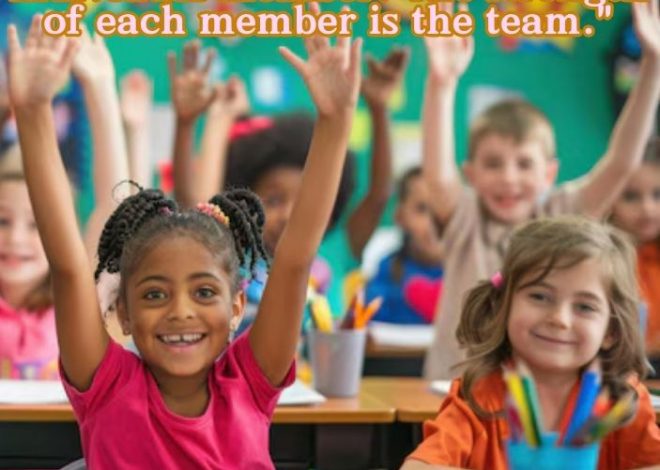
“Building Strong Learners: Effective Educational Approaches for Ages 9 to 12”
Educating children aged 9 to 12, often referred to as pre-teens or tweens, requires a thoughtful and adaptive approach to curriculum design. At this stage, children undergo significant cognitive, emotional, and social development, which makes it a critical time for shaping their learning experiences. Tailoring the curriculum to fit the developmental needs of children in this age group can foster academic success, curiosity, and a love of learning, while also helping them navigate the challenges of growing independence and increasingly complex schoolwork. This essay will explore best practices for tailoring a curriculum for children aged 9 to 12, considering their cognitive abilities, social-emotional development, and individual learning needs. By aligning teaching methods, content, and assessments with these developmental milestones, educators can create an environment that nurtures the whole child, fosters critical thinking, and prepares students for the academic demands of adolescence.
- Understanding Developmental Milestones in Children Aged 9 to 12
Before diving into curriculum design, it’s important to understand the developmental characteristics of children between the ages of 9 and 12. Cognitive, social, and emotional changes are occurring rapidly during this stage of life, which means that traditional one-size-fits-all teaching methods may not be as effective as those that are responsive to individual needs.
- Cognitive Development:
Children in this age group typically progress from concrete to more abstract thinking. They begin to understand complex concepts, think logically, and explore cause-and-effect relationships. While they can now solve multi-step problems and understand abstract concepts, they may still struggle with higher-order thinking tasks like critical analysis or applying their learning to unfamiliar situations. Curriculum for this age should focus on encouraging deeper thinking without overwhelming them. - Social-Emotional Growth:
Pre-teens develop stronger peer relationships during this time, and many begin to place more importance on social acceptance. This can lead to an increased interest in group work, collaborative learning, and peer feedback. However, they are also learning to manage their emotions, which can occasionally lead to volatility. Emotional regulation is an important part of this stage, so incorporating emotional intelligence development into the curriculum can help children navigate these changes. - Independence and Identity Formation:
At this age, children begin to assert their independence, which includes taking ownership of their learning. They may seek out personal interests or extracurricular activities that allow them to develop a sense of identity. The curriculum should be flexible enough to provide room for student choice and self-directed learning, enabling them to feel invested in their education.
Best Practices for Tailoring Curriculum to Fit Pre-Teens
To effectively tailor the curriculum for students aged 9 to 12, educators must incorporate practices that align with the developmental needs and learning styles of children at this stage. Below are several key strategies for creating a curriculum that engages students, encourages academic growth, and supports their social-emotional development.
1. Incorporate Active Learning and Hands-On Activities
One of the most effective ways to engage children aged 9 to 12 is through active learning. At this stage, children thrive when they can directly interact with the material, manipulate objects, and engage in projects that help them see real-world applications of what they’re learning.
- Project-Based Learning (PBL): PBL is particularly effective for students in this age group. It allows them to explore topics deeply, engage in problem-solving, and collaborate with peers. For example, a science project where students design their own experiments encourages critical thinking, creativity, and teamwork.
- Interactive Lessons: Instead of passive learning through lectures, hands-on experiences like science experiments, art projects, or math manipulatives can help children solidify abstract concepts. For instance, using physical models to explain fractions or geometry makes math tangible and easier to grasp for many students.
2. Foster Critical Thinking and Problem-Solving Skills
While children aged 9 to 12 are developing their ability to think abstractly, they often need explicit instruction to build strong critical thinking and problem-solving skills. The curriculum should encourage students to ask questions, analyze information, and form conclusions based on evidence.
- Inquiry-Based Learning: Encourage students to pose questions about the world around them and explore answers. This approach promotes curiosity, independence, and critical analysis. For example, during a history unit, students might research a particular historical event, form a hypothesis about its impact, and then present their findings using evidence from multiple sources.
- Debate and Discussion: Organizing debates on relevant topics not only improves students’ public speaking and persuasion skills but also strengthens their ability to think critically and consider multiple perspectives.
3. Differentiate Instruction to Meet Individual Needs
Children in this age group come to school with varying levels of background knowledge, skills, and learning styles. Differentiating instruction ensures that each child’s unique needs are met, allowing for personal growth at their own pace.
- Tiered Lessons: For example, in a language arts lesson on reading comprehension, students who are struggling may work with simpler texts or receive additional support, while those who are advanced can tackle more complex materials. All students work on the same essential concept but are provided with activities that suit their developmental stage.
- Flexible Grouping: Working in groups with peers who have similar or complementary skills allows children to learn from one another. It also supports social skills development. Changing groupings regularly ensures that students are exposed to diverse perspectives and styles of collaboration.
4. Incorporate Social-Emotional Learning (SEL)
Given the emotional growth that occurs in this age range, it’s essential to include social-emotional learning (SEL) as part of the curriculum. SEL helps students develop self-awareness, manage their emotions, establish positive relationships, and make responsible decisions.
- Collaborative Activities: Group work, peer reviews, and cooperative projects help students develop communication and teamwork skills. These activities also create opportunities for students to practice empathy, resolve conflicts, and build positive relationships.
- Mindfulness and Emotional Regulation: Simple mindfulness exercises, like deep breathing or reflective journaling, can help students develop emotional regulation skills, reducing stress and improving focus. Incorporating these practices into the school day supports both academic and emotional well-being.
5. Provide Opportunities for Student Choice and Autonomy
As children in this age group begin to develop a sense of independence, allowing them to have some control over their learning can increase motivation and investment in their education. Providing opportunities for choice can also help them connect their schoolwork to their personal interests.
- Choice Boards or Learning Contracts: Teachers can offer a range of assignments or activities on a particular topic and allow students to choose the one that best fits their interests and learning style. This could be a choice between writing a report, creating a presentation, or designing a visual project.
- Independent Research Projects: Encouraging students to pursue topics they are passionate about gives them a sense of ownership and fosters curiosity. These projects can be guided by specific academic goals while allowing the child to explore a topic that excites them.
6. Encourage a Growth Mindset
The concept of a growth mindset, popularized by psychologist Carol Dweck, is particularly relevant for pre-teens. This mindset focuses on the belief that intelligence and abilities can be developed through effort and perseverance.
- Praise Effort, Not Just Achievement: Instead of only celebrating high grades, praise the effort, persistence, and problem-solving skills students demonstrate in overcoming challenges. This reinforces the idea that learning is a process, and mistakes are opportunities for growth.
- Resilience Through Challenges: The curriculum should be structured so that students are exposed to challenges that push them outside of their comfort zones but are not overwhelming. This helps them build resilience and develop a positive attitude toward learning, even when faced with difficult tasks.
Conclusion
Tailoring the curriculum to meet the needs of children aged 9 to 12 is essential for fostering a positive, engaging, and effective educational experience. By incorporating active learning, promoting critical thinking, differentiating instruction, and integrating social-emotional learning, educators can support students’ cognitive and emotional growth. Offering students opportunities for autonomy and encouraging a growth mindset will further empower them to take ownership of their learning. As children at this stage develop into more independent, confident, and capable learners, a thoughtfully designed curriculum can make a lasting impact on their academic journey and overall development.














